UMMC emergency caregivers well prepared to handle mass-casualty shooting events
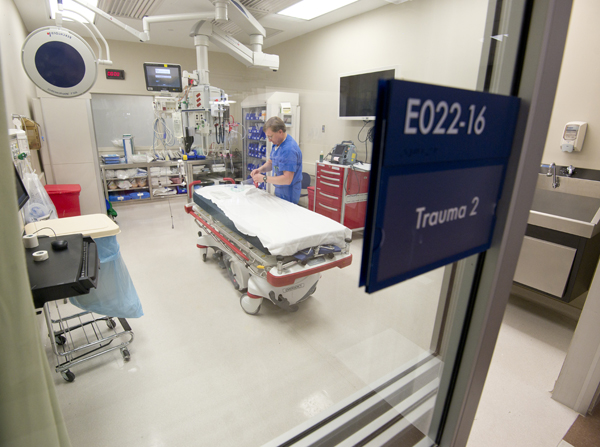
If the Jackson metro area experienced a mass shooting, would trauma surgeons and caregivers in the University of Mississippi Medical Center's Emergency Department be up to the task of treating wounds as devastating as you'd find on a battlefield?
“We are probably as well prepared as you can get,” said Dr. Brian Tollefson, an emergency physician and U.S. Air Force member who serves as State Air Surgeon. “It would have to be a pretty horrific event to overwhelm the resources in this town, but it could happen.”
The state's only Level 1 trauma center, UMMC employs a number of military veterans, National Guard members and AirCare flight paramedics who are no strangers to treating combat wounds similar to those suffered by the dozens killed or injured during attacks deemed mass-casualty shootings.
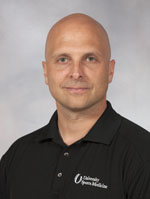
That means emergency room physicians are being called upon to practice “battlefield medicine” as opposed to more routine care given to someone who suffered a gunshot wound in a holdup or domestic violence incident. They're saving lives by repairing ripped and shredded organs and limbs caused not by handguns, but military-style assault weapons and explosive devices.
“With mass shootings, we now have high-velocity rifle injuries from military-style weapons, plus the potential for explosive devices,” said Tollefson, an associate professor of emergency medicine. “There is much higher velocity with those bullets, and much higher damage.”
Associate professor of medicine and emergency physician Dr. Kendall McKenzie is a 15-year military veteran and Army National Guard member who has been deployed four times since 2003: Iraq, Afghanistan, Iraq again, and in 2015, Kuwait. His duties have included being a helicopter flight surgeon on the front lines of evacuating injured soldiers.
“In some situations, it's worse than what we would see on the battlefield,” McKenzie said of wounds from a mass shooting event. “The same gun we carry on patrol in Iraq could be used.”
While the American military has limits on the type of bullets used in warfare, he said, mass shooters often use more lethal and violent means. “In a civilian mass killing, he can load up his rifle with expanding bullets. They rip open tissue. Those rifles are designed to stop people, and to kill people.”
UMMC often cares for the most seriously injured gunshot victims statewide, and that factors into the hospital's ongoing preparations. “We've exercised our mass casualty plans during events like tornadoes. We've done it before, and we can take care of it again,” McKenzie said.
It's a matter of swiftly and efficiently organizing available resources ranging from ED caregivers to metro-area National Guard units, to Mississippi MED-COM, the state-of-the-art communications center housed at UMMC that coordinates emergency responders and agencies in addition to hospitals. “Everyone knows what their role and responsibility is. It's not that difficult to coordinate,” said Dr. Alan Jones, professor of emergency medicine and chair of the Department of Emergency Medicine.
“We deployed during Hurricane Katrina and set up a mobile hospital,” said Tollefson, commander of the 172nd Medical Group of the Mississippi Air National Guard who spent the better part of a decade in active duty as a flight surgeon following the Sept. 11 terrorist attacks in 2001.
“The military can do that in a matter of hours. If there was a significant mass casualty event, we (local National Guard units) could have that kind of involvement.”
One of the biggest challenges, Tollefson said, is making quick decisions on just where large numbers of patients will be treated. “The protocol says to bypass the small hospitals and take them to a trauma center,” he said. “But nine or 10 people with significant wounds would overwhelm even your busiest trauma center,” Tollefson said.
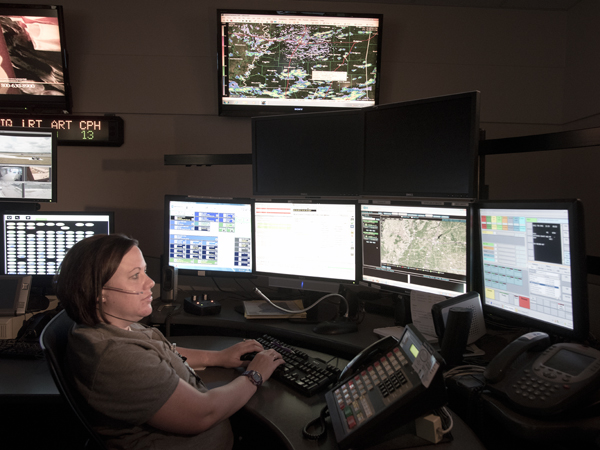
That's where the busy communications specialists at MED-COM would come into play, McKenzie said. “They can triage patients so that the ones who need to come here for trauma services can be shuttled here, and the less injured can go to other facilities. In the majority of mass shootings, it doesn't result in that large a number. When you see there are dozens injured, that sticks out in your mind, but there are shootings every other day that aren't at that level. And some people will be dead at the scene and won't be transported to a hospital.”
Another key element would be UMMC's new trauma unit, which opened in summer 2015 and includes six patient rooms that can double as operating rooms when needed. “Some patients will need to go to the OR immediately,” Tollefson said. “If you have five of them at the same time, then that can overwhelm your resources. That's why triage is so important.”
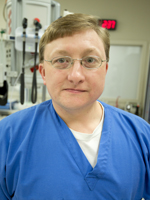
The ED would begin configuring its resources literally as an event unfolded, said Adrian Davis, an ED charge nurse. Davis, others in the ED, and physician specialists and the trauma team would likely get initial notification from MED-COM, which would be in communication with emergency responders and law enforcement on the ground.
Front-line responders would relay to MED-COM how many people were thought to be injured. “MED-COM would get in touch with surrounding hospitals, tell them what the incident is, and ask if they can take some of the minor injuries,” Davis said. “We'd take the more serious ones.”
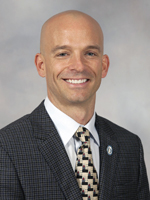
Jones said he or another physician would become the point person for all ED staff, ensuring all were on the same page and receiving the same information. The trauma team would into spring into action, and staff would check blood supplies and prepare operating rooms. “If you have people who can be discharged from the ED to get some of those beds open, you do that,” Davis said.
ED staff “deals with trauma right alongside the trauma surgeon,” McKenzie said. “If we needed to put two patients in a room, we could. We have expanded capabilities so far as size and more designated trauma bays. We have a dedicated CT scanner in our ED.
“It's a team approach. That's the way we do business here. Some hospitals institute separate trauma care from their ERs. We don't do that here.”
In the event of an explosion, McKenzie said, the treatment process is far from the same as in a shooting. “The wounding pattern is vastly different with an explosive event, and you have the problem of reverse triage,” he said. “The people who are able to walk away from a scene have a tendency to go to the ER themselves, and if the ERs aren't careful, they can fill up with the less injured patients.
“That's where MED-COM would earn its keep and possibly send the less injured patients further away during transport, and UMMC would take care of crushed patients or those who have amputations. You wouldn't want to fill up ED beds with the walking wounded. We might have to set up an alternate ED for them.”
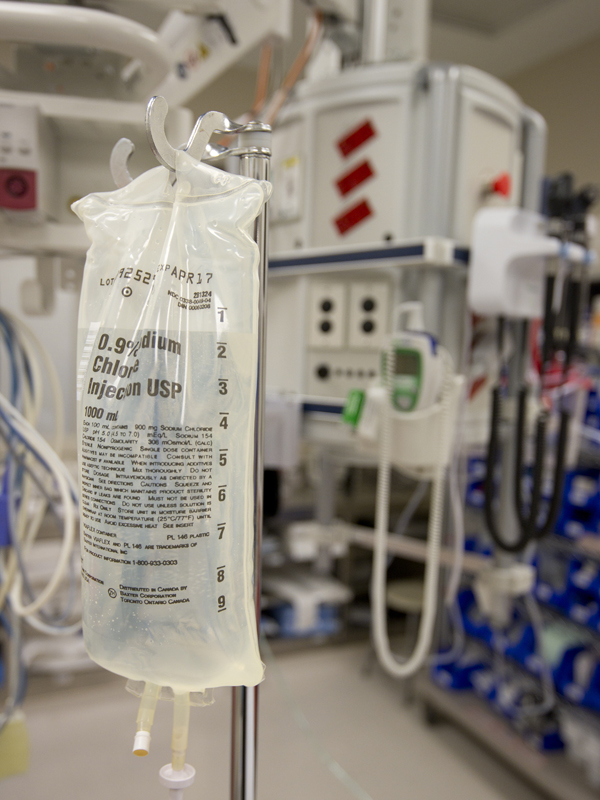
Whether it's injuries from an assault rifle or an explosive, Jones said, “the tenets of stabilization are all the same: assess the patient and triage appropriately, establish an airway, and address injuries that are life-threatening with immediate action. We want to focus our resources on the patients we think can be salvaged.”
UMMC also could bring into play its Rapid Track treatment area designed for ED patients with injuries or sicknesses that are not life-threatening or true emergencies. “To the walking wounded whose injuries aren't life threatening, it's the end of the world, but those with a cut or bruise may have to sit for a while,” McKenzie said.
McKenzie remembers being a resident physician when about nine shooting victims from a nightclub melee poured into the ED literally at the same time, with various degrees of injuries.
It was handled.
“Just being in this type medical field - emergency medicine and trauma surgery - it's an expectation of the job,” Tollefson said. “Everyone would come in and help out. You wouldn't even have to ask them to.”


